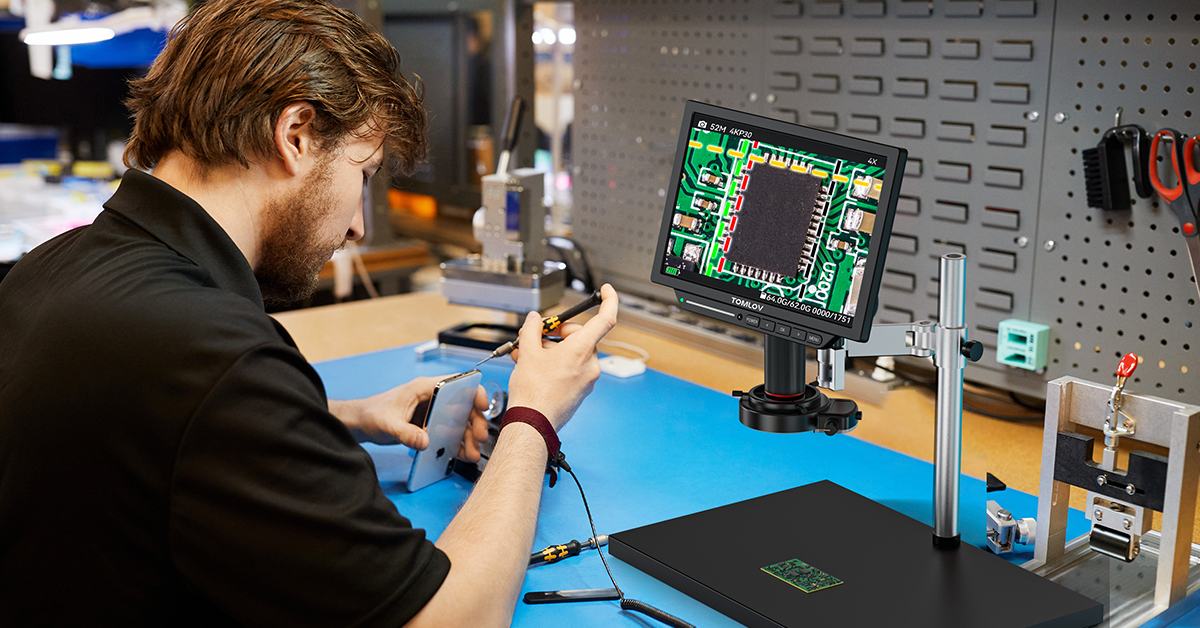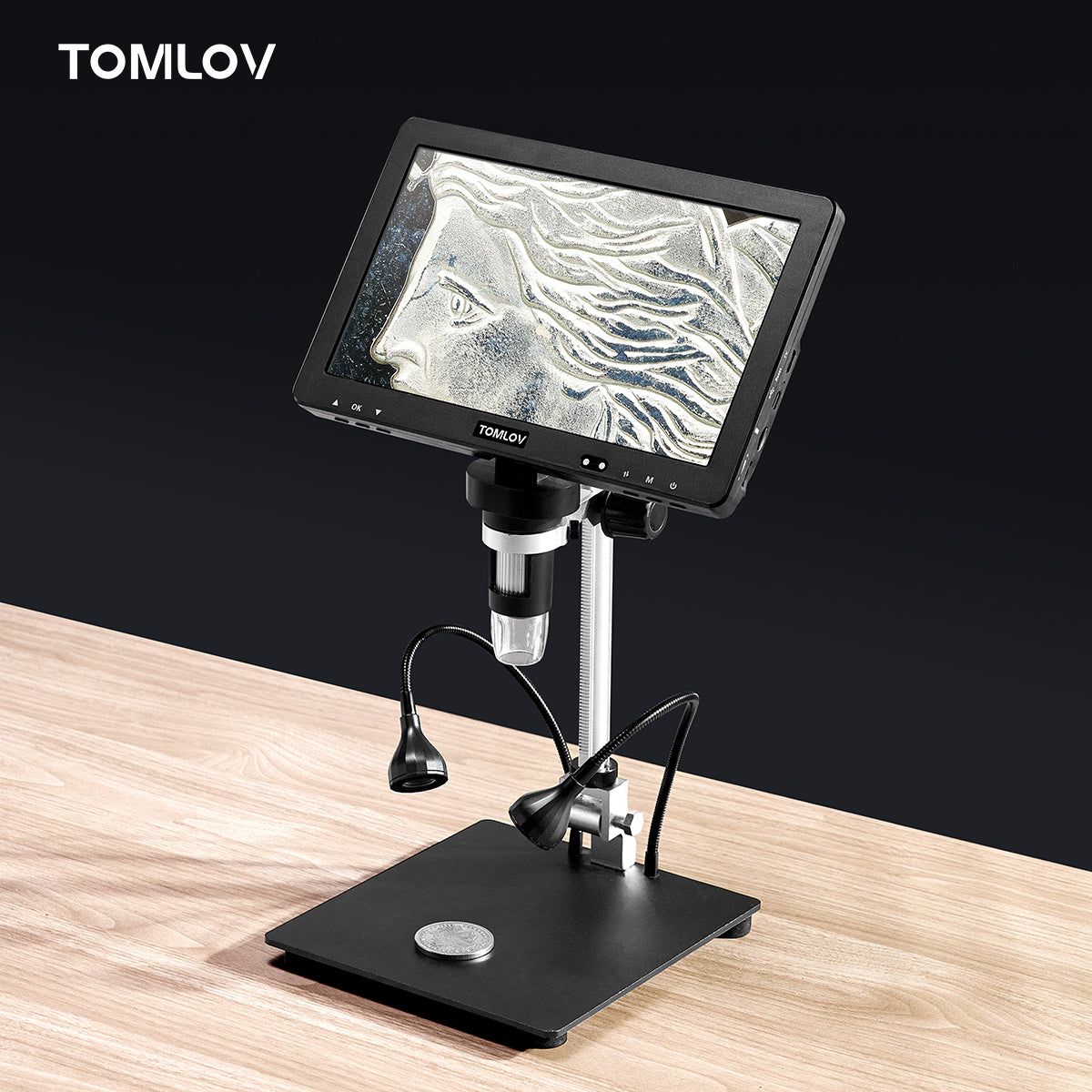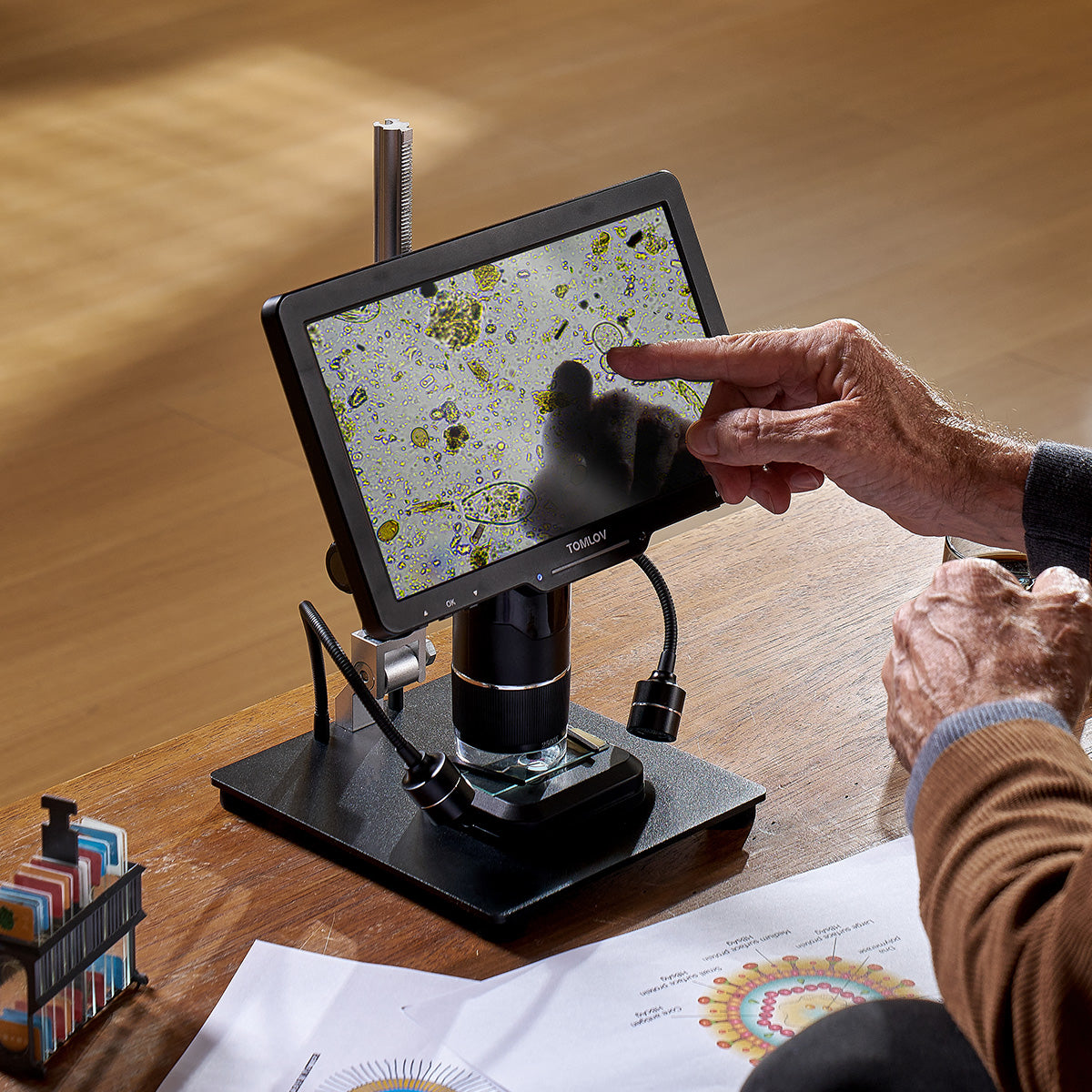Understanding Soldering Microscopes: A Primer for Electronics Technicians
What is a Soldering Microscope?
A soldering microscope is a key tool for electronics technicians. It's a high-powered microscope designed for work on small, intricate circuits. This tool allows for a close-up view of soldering points on electronic components. It helps to avoid mistakes by magnifying tiny areas. With these scopes, you can solder with greater accuracy and efficiency. They have features like zoom and LED lights to aid your work. A good soldering microscope is vital for doing precise electronic repairs and modifications.

Key Features to Look for in a Quality Soldering Microscope
- High Magnification Range: Look for a scope that can zoom in closely to see small components.
- Adjustable Lighting: Bright, focused lights help you see your work area clearly.
- Large LCD Screen: A big screen makes it easier to view what you're working on.
- Camera Quality: A high-def camera lets you see tiny details without blur.
- Stand Stability: A strong stand keeps the scope steady while you work.
- User Controls: Simple buttons and knobs make it easier to adjust settings.
- Durability: A well-built microscope can handle daily use without breaking.
- Portable Design: A lightweight, compact scope can be moved around with ease.
- Warranty: Look for a warranty to protect your investment.
- Compatibility: Make sure it works with your other tools and accessories.
Selecting the Right Digital Microscope for Soldering
Assessing Image Quality and Magnification
When choosing a digital microscope for soldering, key aspects are image quality and magnification. The ideal microscope should offer a clear, sharp image to spot even the smallest defects. Look for units with high-resolution cameras. They should provide at least 1080p quality. Magnification is also crucial. You’ll need a range that suits your work, typically from 10x to 40x. Some scopes go even higher. Adjustable zoom is a bonus, giving you control to focus on finer details. Ensure these features match your soldering needs for best results.
Evaluating User-Friendly Features for Efficiency
- Look for adjustable stands and arms to easily position the microscope.
- Check if the microscope interface is intuitive, with clearly labeled controls.
- Consider models with a large, high-quality LCD screen for comfortable viewing.
- Ensure the microscope has sufficient lighting options for clear visibility.
- Opt for microscopes with memory functions to save settings between sessions.
- Prefer devices with software support for image capturing and analysis.
- Find out about energy-saving features that can prolong the device's life span.
Important Specifications for a High-Resolution Soldering Microscope
When seeking a high-resolution soldering microscope, consider these specs:
- Magnification Range: Opt for 10x to 40x for most tasks. Some models go up to 90x.
- Resolution: Look for at least 1080p to clearly see fine details. Higher resolutions provide even clearer images.
- Digital Zoom: A handy tool for a closer view. Ensure it’s smooth and doesn't blur images.
- Working Distance: Enough space between the lens and object is crucial. Check for at least 4 inches.
- Field of View (FOV): A wider FOV means more area in view. This is good for larger components.
- Lighting: LED lights with adjustable brightness are best. They should not cause glare on soldered joints.
- Camera Quality: A high-quality camera will capture true-to-life colors and clear details.
- Output Options: HDMI and USB outputs are useful for live feeds and capturing images.
By focusing on these specifications, you ensure detailed, precise work on electronic components.
The Role of Soldering Microscopes in Modern Electronics Repairs
Enhancing Soldering Accuracy and Precision
The right soldering microscope is vital for precision in electronics work. It ensures accurate joins. By providing clear magnification, it helps spot tiny flaws. This aids in the creation of high-quality products. With a good microscope, rework and errors decrease. This leads to greater efficiency in repair tasks. These tools are essential for both hobbyists and pros. They are key for anyone needing to do delicate soldering tasks.
The Impact of Advanced Microscopy on Electronics Troubleshooting
Advanced microscopy has changed how we fix modern electronics. It lets us see tiny details on circuit boards. Techs can find and fix problems faster and better. With high-res images, they spot issues that were once too small to see. This means less guessing and more precise repairs. New microscopes even help with training. They can show clear pictures to teach new skills. This tech supports the growth of the electronics repair industry.




Laisser un commentaire
Tous les commentaires sont modérés avant d'être publiés.
Ce site est protégé par hCaptcha, et la Politique de confidentialité et les Conditions de service de hCaptcha s’appliquent.